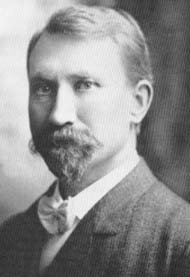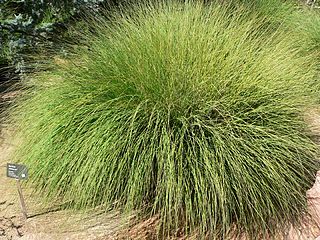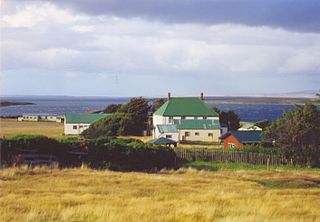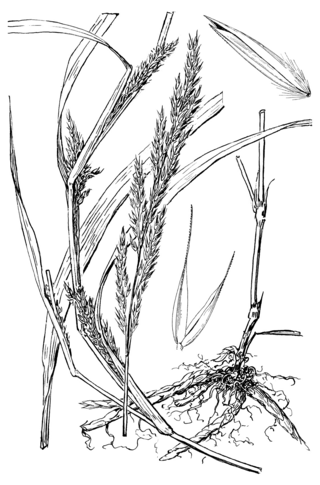
The Sandhills, often written Sand Hills, is a region of mixed-grass prairie on grass-stabilized sand dunes in north-central Nebraska, covering just over one quarter of the state. The dunes were designated a National Natural Landmark in 1984.

Cynodon is a genus of plants in the grass family. It is native to warm temperate to tropical regions of the Old World, as well as being cultivated and naturalized in the New World and on many oceanic islands.

Per Axel Rydberg was a Swedish-born, American botanist who was the first curator of the New York Botanical Garden Herbarium.

Mahonia repens commonly known as creeping mahonia, creeping Oregon grape, creeping barberry, or prostrate barberry, is a species of Mahonia native to the Rocky Mountains and westward areas of North America, from British Columbia and Alberta in the north through Arizona and New Mexico, then into northwest Mexico by some reports. It is also found in many areas of California and the Great Basin region in Nevada.

Bouteloua dactyloides, commonly known as buffalograss or buffalo grass, is a North American prairie grass native to Canada, Mexico, and the United States. It is a shortgrass found mainly on the High Plains and is co-dominant with blue grama over most of the shortgrass prairie.

Agropyron cristatum, the crested wheat grass, crested wheatgrass, fairway crested wheat grass, is a species in the family Poaceae. This plant is often used as forage and erosion control. It is well known as a widespread introduced species on the prairies of the United States and Canada.

Phaseolus maculatus is a plant native to Mexico and the southwestern United States from Arizona, New Mexico, and Texas. It is found on dry, rocky hillsides in meadows and in wooded areas from 1500 to 2400 m (5000–8000 ft) in elevation.

Muhlenbergia is a genus of plants in the grass family.

Tussock grasses or bunch grasses are a group of grass species in the family Poaceae. They usually grow as singular plants in clumps, tufts, hummocks, or bunches, rather than forming a sod or lawn, in meadows, grasslands, and prairies. As perennial plants, most species live more than one season. Tussock grasses are often found as forage in pastures and ornamental grasses in gardens.

Muhlenbergia porteri is a species of grass known by the common names bush muhly and Porter's muhly.

Muhlenbergia richardsonis, known by the common name mat muhly, is a species of grass. It is native to North America, where it can be found throughout much of Canada, Alaska, the western half of the contiguous United States through California, and in Baja California, Mexico.

Artemisia filifolia, known by common names including sand sagebrush, sand sage and sandhill sage, is a species of flowering plant in the aster family. It is native to North America, where it occurs from Nevada east to South Dakota and from there south to Arizona, Chihuahua, and Texas.

Muhlenbergia cuspidata is a species of grass known by the common name plains muhly. It is native to North America where it is distributed across central Canada and the central United States.

Hilaria mutica, synonym Pleuraphis mutica, is a species of grass known by the common name tobosa, or tobosa grass. It is native to Northern Mexico, and the Southwestern United States, in Arizona, New Mexico, Oklahoma, and Texas.

Muhlenbergia capillaris, commonly known as the hairawn muhly, is a perennial sedge-like plant that grows to be about 30–90 cm (0.98–2.95 ft) tall and 60–90 cm (2.0–3.0 ft) wide. The plant includes a double layer; green, leaf-like structures surround the understory, and purple-pink flowers outgrow them from the bottom up. The plant is a warm-season grass, meaning that leaves begin growth in the summer. During the summer, the leaves stay green, but they morph during the fall to produce a more copper color. The seasonal changes also include the flowers, as they grow out during the fall and stay healthy till the end of autumn. The muhly grows along the border of roads and on plain prairies. The grass clumps into herds, causing bush-like establishments in the area the hairawn muhly inhabits. The flowers are very feathery and add a cloudlike appearance to the top of the grass. It is native to eastern North America and can be used for a multitude of purposes, including ornamental gardening and farming. It was voted 2012 plant of the year by the Garden Club of America.

Muhlenbergia lindheimeri is a species of bunch grass, 3-6' H, known by the common names big muhly, blue muhly, and Lindheimer's muhly. It is native to North America, where it can be found in northern Mexico and up to the Edwards Plateau region of Texas. It is also grown as an ornamental grass. as it is useful as a green screen, erosion control, water retention and nest material for many species of birds

Thomas Henry Kearney was an American botanist and agronomist known for his work on cotton and date palm breeding, plant taxonomy, and the flora of Arizona.

Robert Hibbs Peebles (1900–1956) was an American botanist and agronomist who worked for the United States Department of Agriculture. He is known for his contributions to the flora of the American Southwest and work on breeding cotton. His 1951 book Arizona Flora, co-authored with Thomas H. Kearney, and republished posthumously in 1960, is recognized as the most comprehensive study of Arizona plants of its time.

Rose Eudora Collom was an American botanist and plant collector. She was the first paid botanist of the Grand Canyon National Park. She discovered several plant species, some of which were named in her honor, and collected numerous plant specimens.

Muhlenbergia frondosa is a species of plants in the genus Muhlenbergia and a member of the grass family. Its common name is common satin grass or wirestem muhly. It is informally grouped with other satin grasses, which are other species in Muhlenbergia. It is a warm-season C4-photosynthetic grass.





















